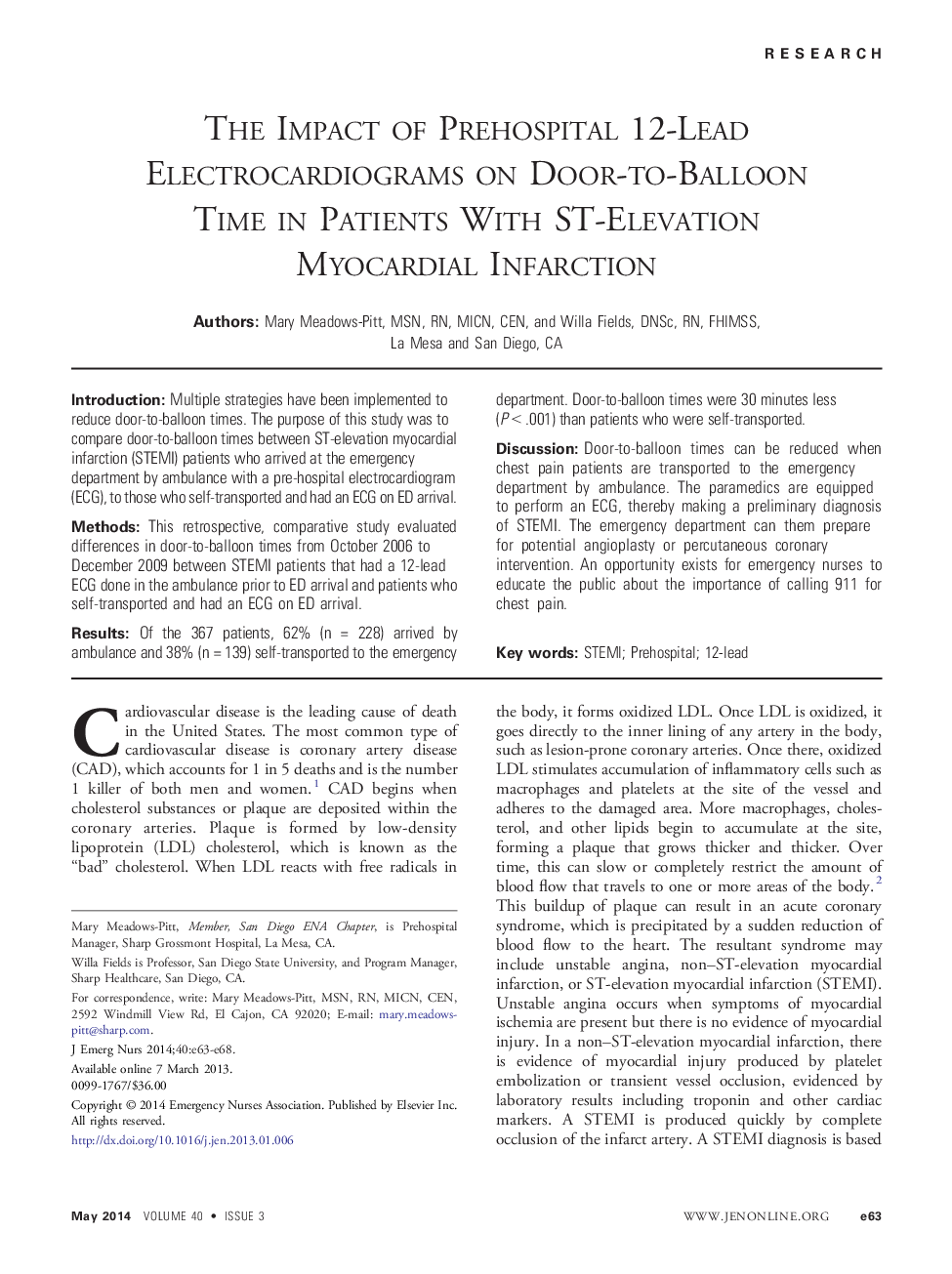| Article ID | Journal | Published Year | Pages | File Type |
|---|---|---|---|---|
| 2608424 | Journal of Emergency Nursing | 2014 | 6 Pages |
IntroductionMultiple strategies have been implemented to reduce door-to-balloon times. The purpose of this study was to compare door-to-balloon times between ST-elevation myocardial infarction (STEMI) patients who arrived at the emergency department by ambulance with a pre-hospital electrocardiogram (ECG), to those who self-transported and had an ECG on ED arrival.MethodsThis retrospective, comparative study evaluated differences in door-to-balloon times from October 2006 to December 2009 between STEMI patients that had a 12-lead ECG done in the ambulance prior to ED arrival and patients who self-transported and had an ECG on ED arrival.ResultsOf the 367 patients, 62% (n = 228) arrived by ambulance and 38% (n = 139) self-transported to the emergency department. Door-to-balloon times were 30 minutes less (P < .001) than patients who were self-transported.DiscussionDoor-to-balloon times can be reduced when chest pain patients are transported to the emergency department by ambulance. The paramedics are equipped to perform an ECG, thereby making a preliminary diagnosis of STEMI. The emergency department can them prepare for potential angioplasty or percutaneous coronary intervention. An opportunity exists for emergency nurses to educate the public about the importance of calling 911 for chest pain.
